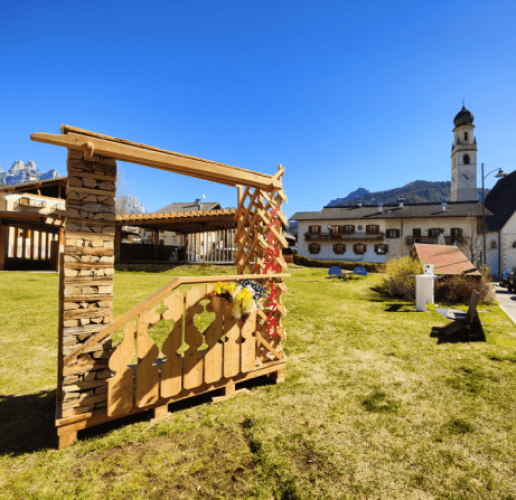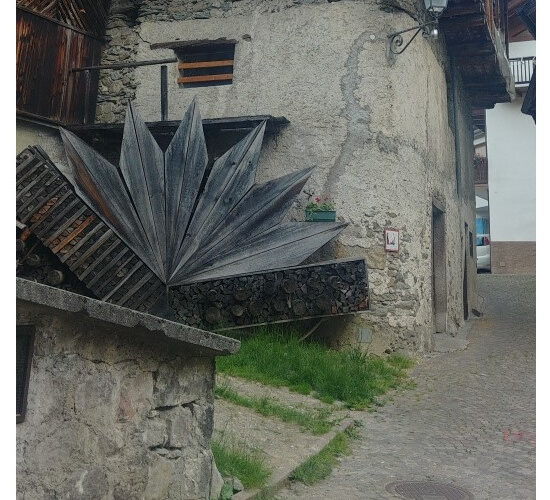Small paintings

That was a bit of a maze, but I haven’t lost you yet.
We have only just mentioned frescos in passing at the start. Here we can see two, one after the other. The one in front of you is dated 1652. It depicts St. George and the dragon with the princess up on the hill. In the centre the souls that have been saved from the flames are being accompanied to heaven in the presence of the Madonna and child. To the side one can see St John, St Romina and St. Francis. A nice little detail to the top left: a woman is watchfully looking down at the road from her window. I have an idea she was a gossip and know-it-all too. The frescos painted on the facades of the houses are a figurative expression that was commonly used. Most of the paintings are along the main streets which were also the routes used for religious processions. Together with statues in niches, and crucifixes, they are a testimony to a profound religious faith and genuine spirituality. The totem on the right will give you further information. On the street slightly sloping up to your left you will see another fresco: the crucifixion. Again, we can see St. Romina, together with St Antony the Abbot. One recognises in the man kneeling, the person who commissioned the fresco, a rare find in wall murals.
























